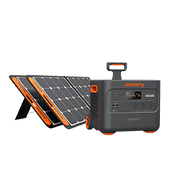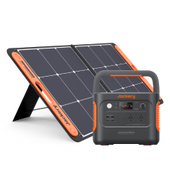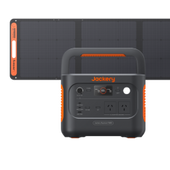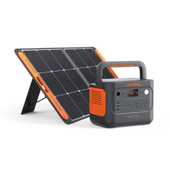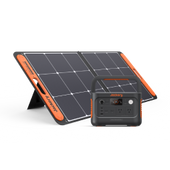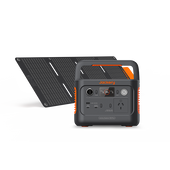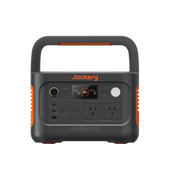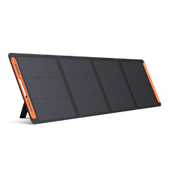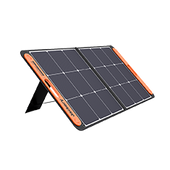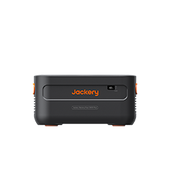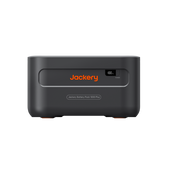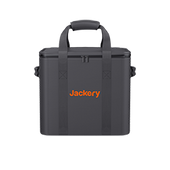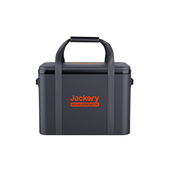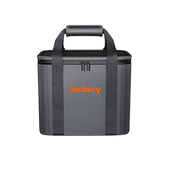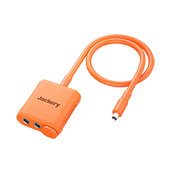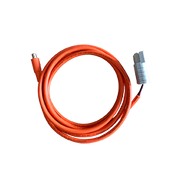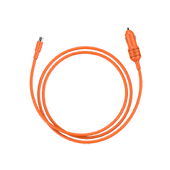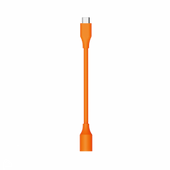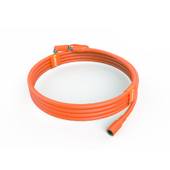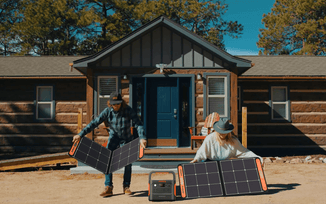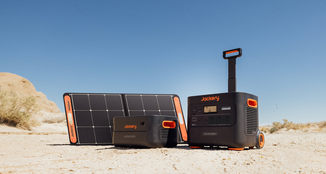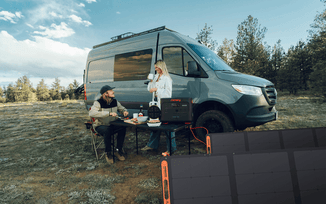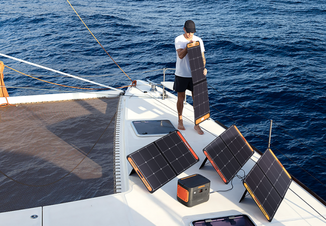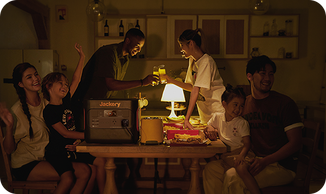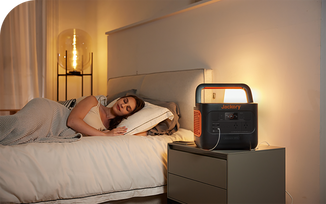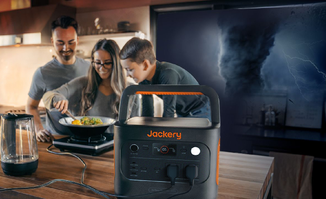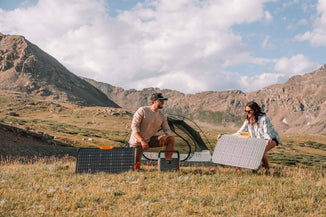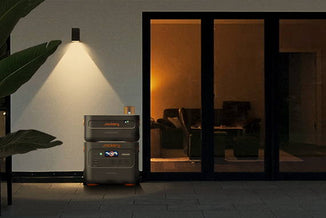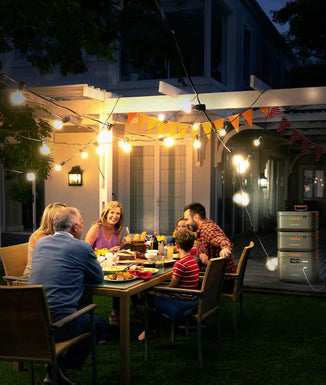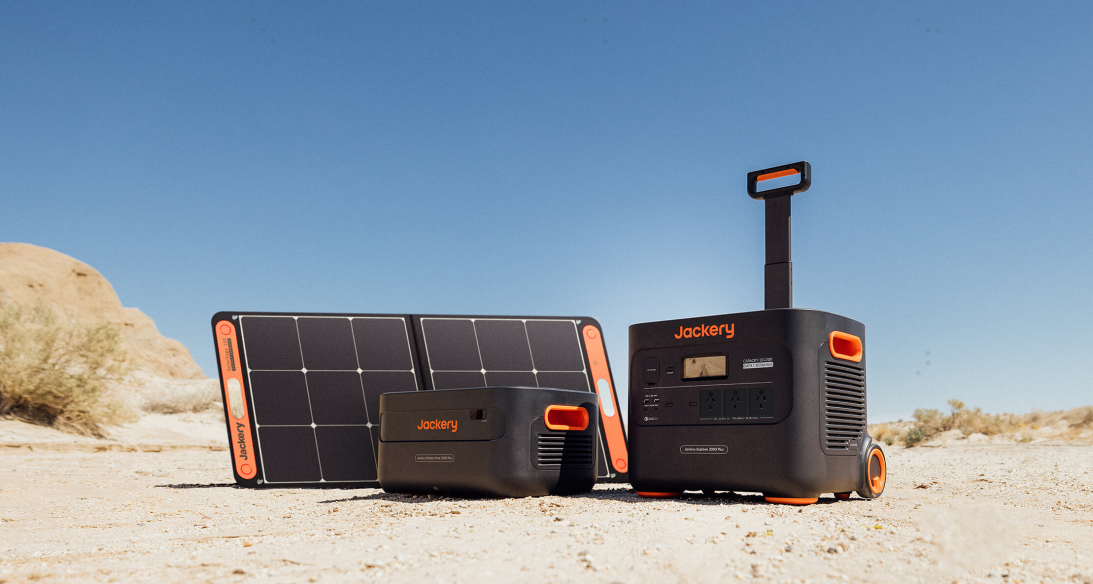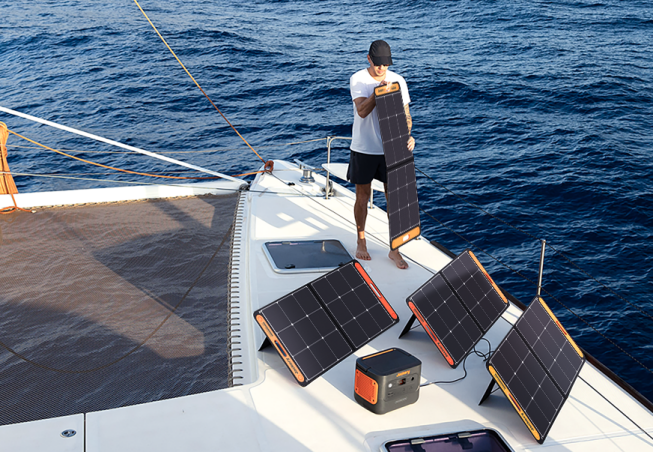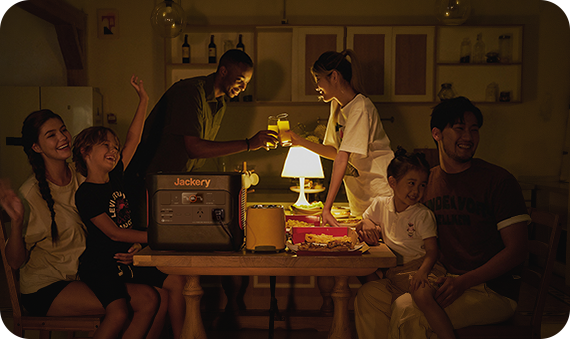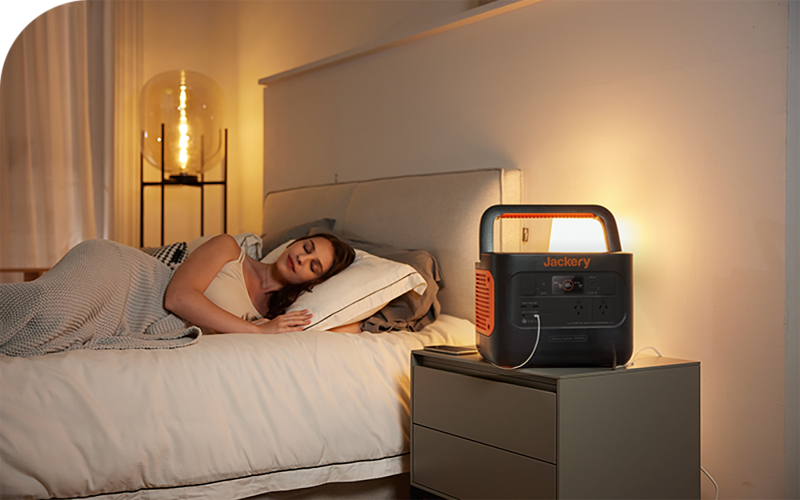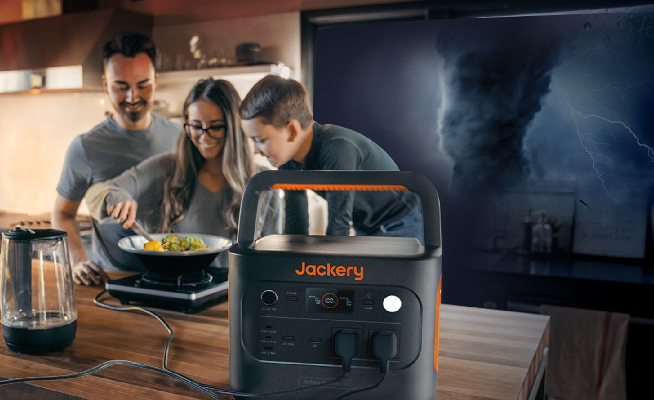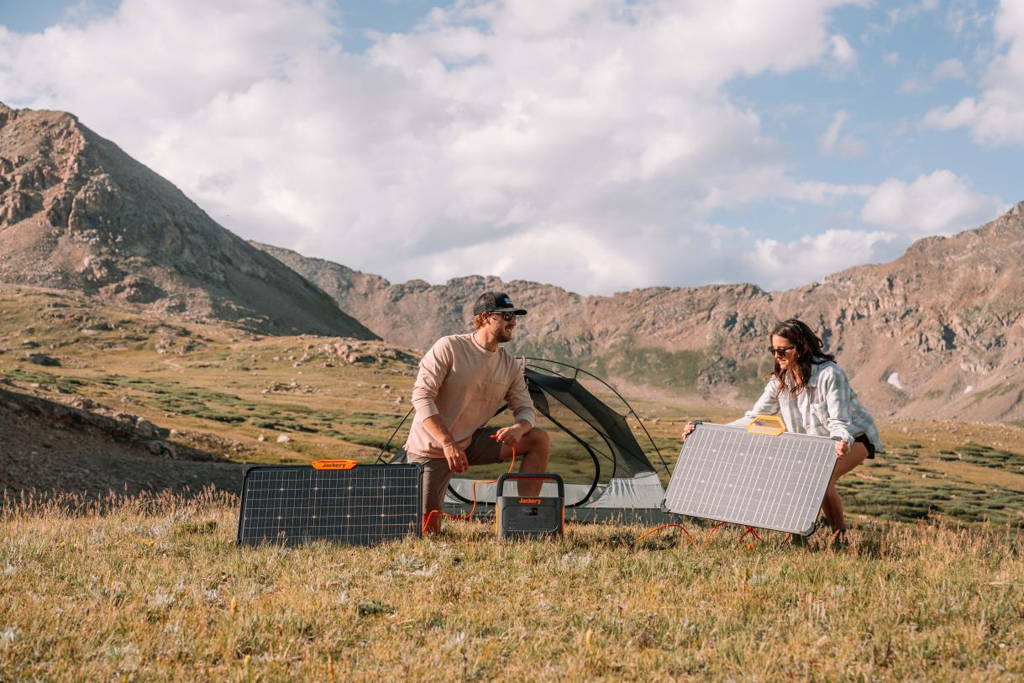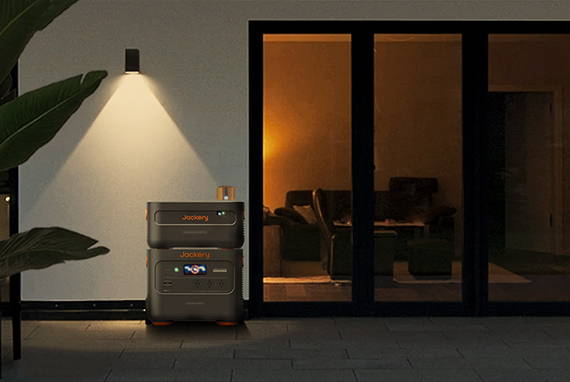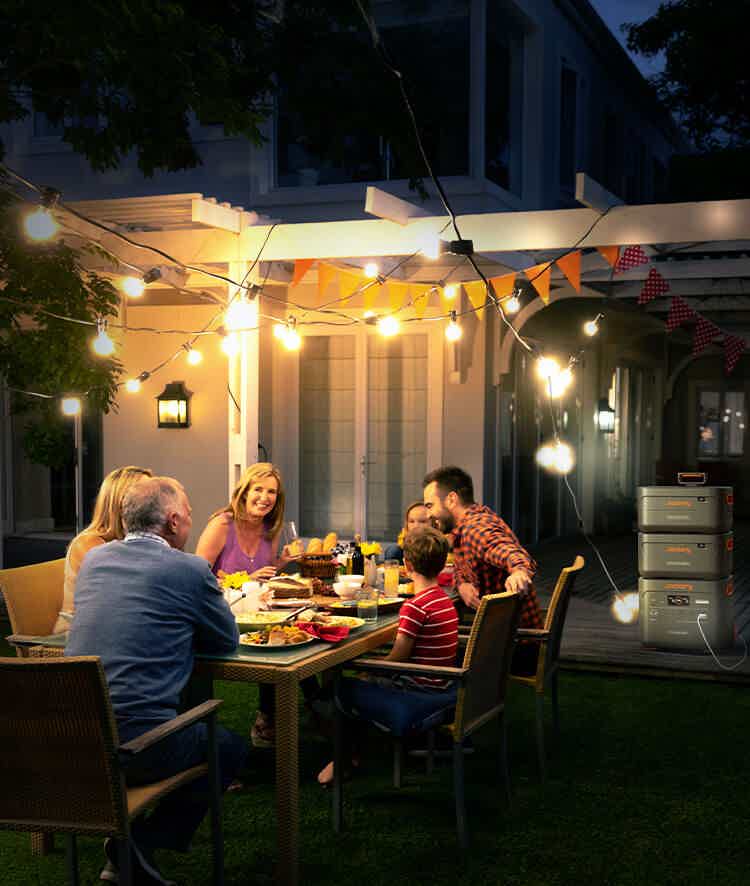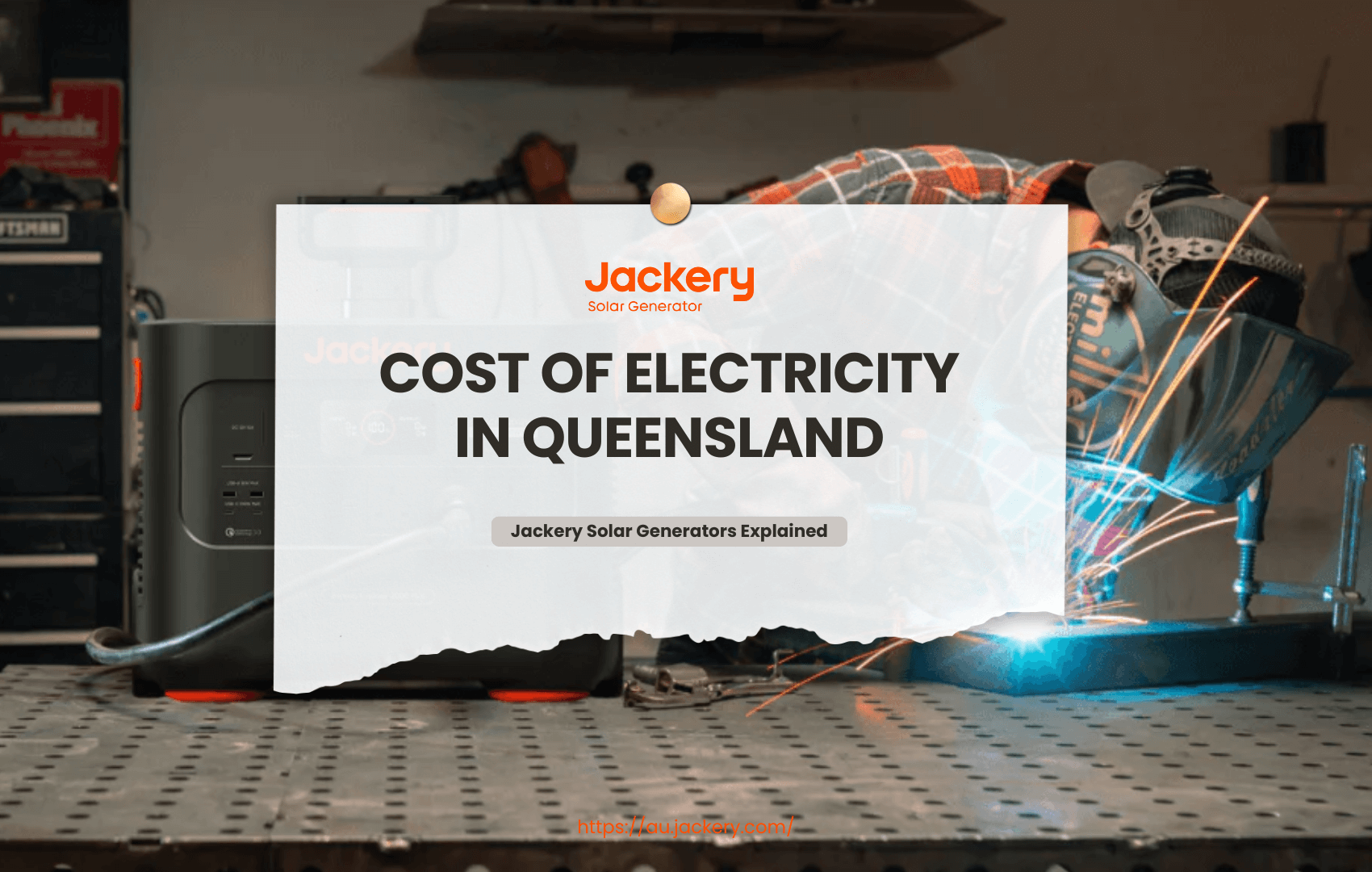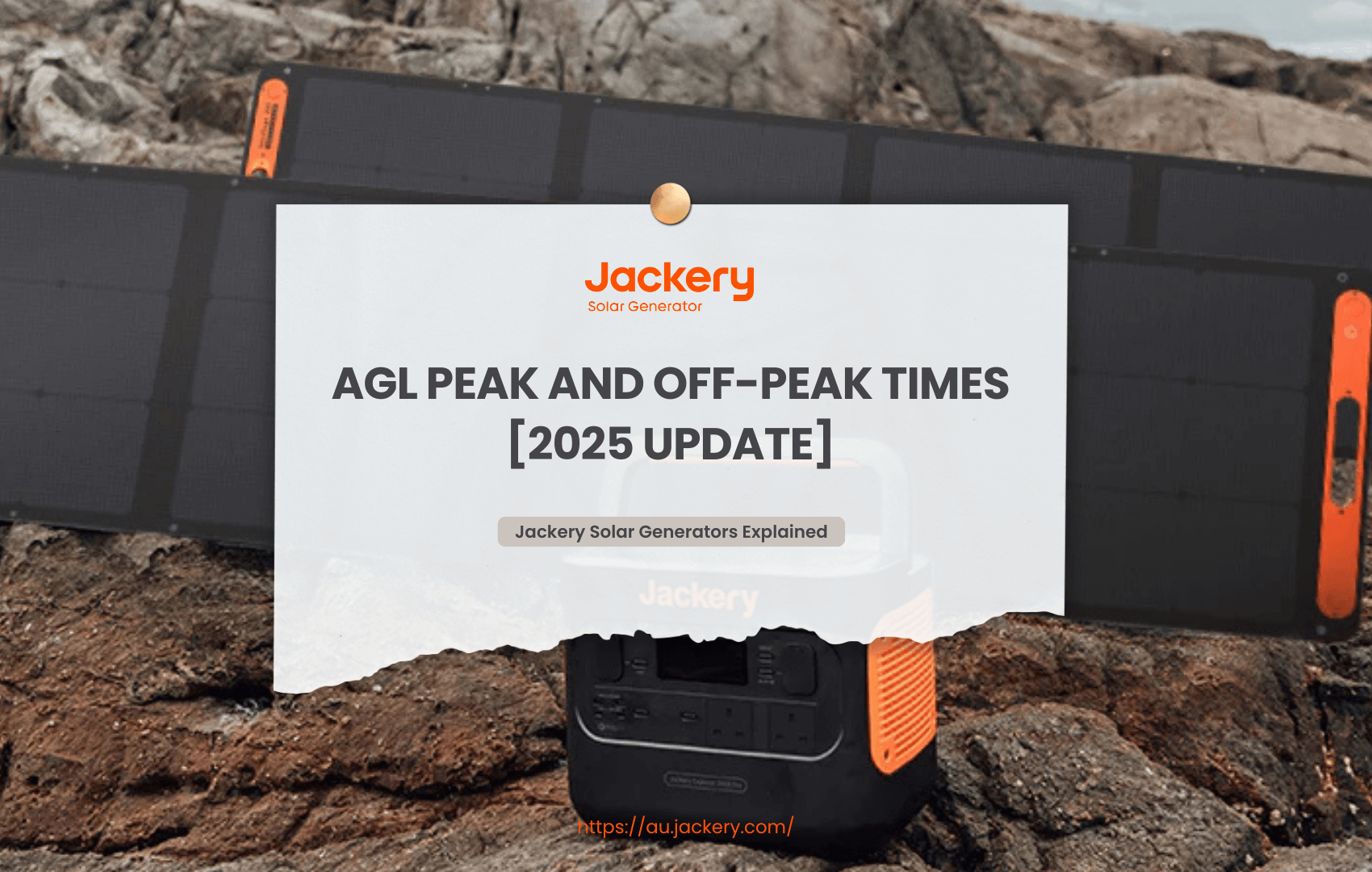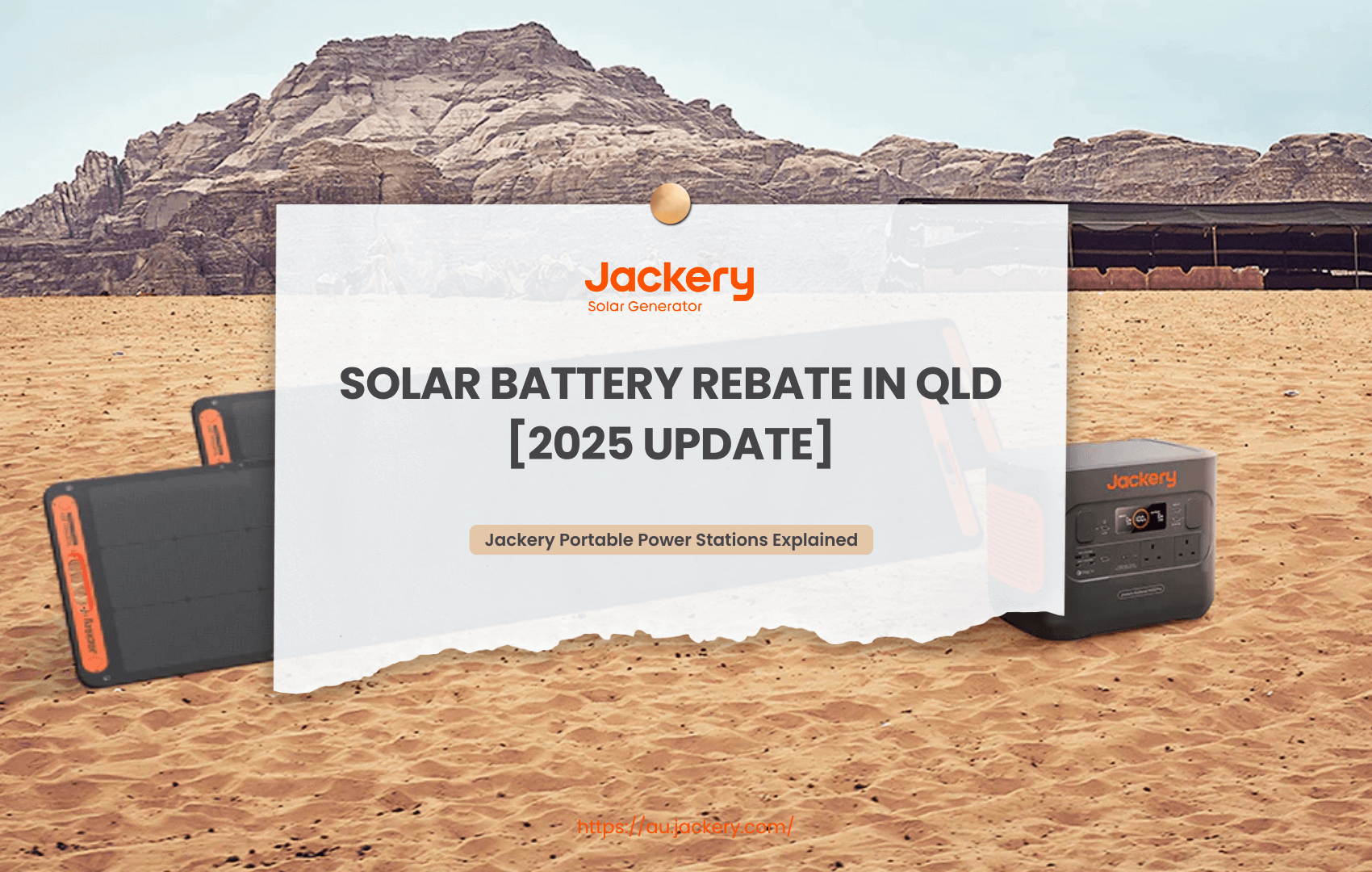|
Key Takeaways: |
|
- Controlled load usage refers to electricity-specific appliances consumed on a separate meter during off-peak hours. - Controlled Load 1 offers fewer hours at a lower rate, while Controlled Load 2 offers more flexible supply times. - Households can save $200–$400 annually using controlled load tariffs. - Controlled load usage is widely available in NSW, VIC, QLD, SA, and TAS. - It's not suitable for appliances that need constant or on-demand power. - We highly recommend Jackery Solar Generator 2000 Plus and 1000 Plus to save your electric bills by powering your household appliances with solar energy. |
What Is Controlled Load Usage?
In Australia, a controlled load refers to a specific electricity tariff applied to certain high-energy-use appliances that are metered separately from the rest of a household's electricity consumption. These appliances typically operate during off-peak hours—times when overall electricity demand is lower—allowing energy providers to offer reduced rates for their usage.
Key Features of Controlled Load Usage
Dedicated Circuit and Separate Metering: An electric hot water system, an underfloor heating system, and a pool pump are examples of appliances that are linked to a dedicated circuit and are metered independently from the regular household power supply.
Off-Peak Operation: The operation of controlled load appliances is often scheduled to take place during off-peak hours, which are typically overnight or during times when there is a very low electricity demand. This scheduling makes the power system load more evenly distributed.
Cost Savings: The fact that these appliances can operate during off-peak hours allows them to take advantage of cheaper electricity rates, which could result in potential cost savings for customers.
Grid Efficiency: A more efficient management of power demand can be achieved through the use of controlled load tariffs, which also help to alleviate strain on the system during peak times and maximise the utilisation of energy resources.
Considerations for Consumers
Eligibility and Setup: To utilise a controlled load tariff, households must have the appropriate metering infrastructure in place. This often involves installing a separate meter for the controlled load circuit.
Appliance Compatibility: Not all appliances are suitable for controlled load tariffs. Only those that can operate independently and do not require constant power supply are typically eligible.
Tariff Variations: Controlled load tariffs and the specific off-peak times can vary between energy providers and regions. Consumers should consult with their energy retailer to understand the particular terms applicable to their location.

Types of Controlled Loads
In Australia, controlled load tariffs can be divided into two main categories: controlled load 1 and controlled load 2. Their availability times, compatibility with different appliance sizes, and related expenses are where they diverge most.
Controlled Load 1 (CL1)
Availability: Typically provides electricity for a set duration each day, often during overnight off-peak hours.
Appliance Suitability: Ideal for larger electric hot water systems (250–630L) that can store sufficient hot water for daytime use.
Cost: Offers lower rates compared to general usage tariffs, making it a cost-effective option for suitable appliances.
Controlled Load 2 (CL2)
Availability: Provides electricity for a longer duration, including both overnight and daytime hours, offering more flexibility.
Appliance Suitability: Suitable for smaller electric hot water systems (100–250L) and other appliances requiring more frequent heating cycles.
Cost: Slightly higher rates than CL1 but still lower than standard tariffs, balancing flexibility with cost savings.
Choosing the Right Controlled Load Tariff
Selecting between CL1 and CL2 depends on your household's specific needs:
Appliance Size and Usage: Larger storage systems that can retain heat throughout the day may benefit from CL1, while smaller systems needing more frequent heating might be better suited to CL2.
Flexibility Requirements: If your household requires hot water or appliance use during daytime hours, CL2's extended availability could be advantageous.
Cost Considerations: CL1 generally offers lower rates, which could lead to greater savings if your usage patterns align with its availability.
To determine which controlled load tariffs are available in your area and to evaluate which choice best suits your household's energy consumption habits, you must speak with your electricity provider.
How to Determine if You're on a Controlled Load Tariff and Steps to Connect
If you want to lower your electricity bills, a controlled load tariff can be a good choice, particularly if you use high-energy items like pool pumps or electric hot water systems. These tariffs provide cheaper power prices used on a different circuit during off-peak hours. How can you tell if this configuration is already helping you? If not, what actions can you take to establish a connection? If it meets your needs, here's how to find out and switch.
How to Check Your Current Tariff
Review Your Electricity Bill: Controlled load tariffs are usually shown as distinct line items on your electricity statement. Depending on your state, look for phrases like "Controlled Load 1," "Controlled Load 2," "Tariff 31," or "Tariff 33."
Contact Your Energy Retailer: Speak with your energy provider if you have any questions about your tariff. They can give you account-specific information and verify if you are on a controlled load tariff.
Inspect Your Metering Setup: Appliances with controlled loads are linked to a specific circuit, frequently with independent metering. Such a configuration on your property indicates that you may be on a controlled load tariff.
How to Connect to a Controlled Load Tariff
If you're not currently on a controlled load tariff but wish to be, you can:
Step 1: Consult Your Energy Retailer
Talk to your provider about your interest in a controlled load tariff. Depending on your area and energy consumption, they can tell you about the suitability and availability.
Step 2: Assess Metering Requirements
A separate meter is needed for a dedicated circuit with a controlled load tariff. You'll need to make arrangements for installation if your property doesn't have it. You can get help with this process from your energy retailer.
Step 3: Engage a Licensed Electrician
Employ a certified electrician to install the required metering equipment and set up the dedicated circuit. This guarantees adherence to legal requirements and safety norms.

What Appliances Can You Use on a Controlled Load Tariff?
In Australia, high-energy-use appliances that run separately from the primary household power source are subject to controlled load pricing. These appliances can be powered at lower rates during specified off-peak hours since they are connected to different circuits and meters. Moving demand to periods of lower total usage helps balance the electrical grid and saves consumers money.
Appliances Commonly Connected to Controlled Load Tariffs
The following appliances are typically suitable for controlled load tariffs:
Electric Hot Water Systems: These are the most common appliances on controlled load tariffs. They can operate during off-peak hours, heating water when electricity demand is low.
Pool Pumps and Heaters: Running pool equipment during off-peak times can save energy.
Underfloor or Slab Heating Systems: These systems can be programmed to heat during off-peak periods, maintaining comfort while reducing energy costs.
Electric Vehicle (EV) Chargers: In some regions, EV chargers can be connected to controlled load tariffs, allowing vehicles to charge during off-peak times.
It's crucial to remember that appliances like ovens, freezers, and lighting systems that need a steady or erratic power supply are typically inappropriate for controlled load tariffs. Furthermore, different energy providers and geographical areas may have different controlled load pricing availability and terms. To determine whether the equipment in your house qualifies and to evaluate the possible advantages, it is, therefore, advisable to speak with your energy retailer.
How Much Money Can You Save With a Controlled Load Tariff?
Switching to a controlled load tariff in Australia can result in significant savings on your electricity bill, especially if you have energy-intensive appliances such as electric hot water systems, pool pumps, or underfloor heating. These tariffs provide lower rates for power consumption during off-peak hours, usually overnight or during periods of low demand.
Estimated Annual Savings by Appliance
Electric Hot Water Systems: Households can save approximately $200 to $300 per year by running electric hot water systems on a controlled load tariff compared to standard tariffs.
Pool Pumps: Operating pool pumps during off-peak hours under a controlled load tariff can result in savings of about $200 to $400 annually, depending on the size and usage patterns.
Underfloor or Slab Heating: Utilising controlled load tariffs for underfloor or slab heating systems can lead to savings ranging from $100 to $250 per year, based on the system's size and usage.
Quarterly Cost Comparisons by State
A comparison of quarterly electricity costs between single rate tariffs and controlled load tariffs across various Australian states illustrates potential savings:
New South Wales (Ausgrid Network):
Single Rate: $668.40
Controlled Load 1: $585.79
Controlled Load 2: $587.07
Victoria (Citipower Network):
Single Rate: $469.04
Controlled Load 1: $439.36
Queensland (Energex Network):
Single Rate: $635.75
Controlled Load 1: $581.19
Controlled Load 2: $584.06
These numbers show that, depending on their location and energy usage habits, homeowners can save anywhere from $30 to $80 every quarter by moving to a controlled load tariff.
Factors Influencing Savings
The actual savings from a controlled load tariff depend on several factors:
Factor 1: Appliance Usage
The potential savings increase with the energy-intensiveness of the appliance and its usage during off-peak hours.
Factor 2: Tariff Type
Controlled Load 1 typically offers lower rates but for shorter durations, while Controlled Load 2 provides electricity for more extended periods at slightly higher rates.
Factor 3: Regional Variations
States and energy providers may have different prices for electricity and controlled load availability.

Is a Controlled Load Tariff Right for You?
A regulated load tariff may be a more affordable choice for Australian families with high-energy-use equipment running during off-peak hours. However, several variables about your home's infrastructure and energy consumption patterns will determine its viability.
When a Controlled Load Tariff May Be Beneficial?
High-Energy Appliances: A controlled load tariff might provide cheaper rates for some products, such as electric hot water systems, pool pumps, or underfloor heating, that use a lot of electricity and can run during off-peak hours.
Separate Metering: The appliance must be on a dedicated circuit, frequently with its own meter, in order to be subject to controlled load tariffs. You can benefit from these tariffs if your property is already configured in this manner or if you are prepared to spend money on the required electrical work.
Predictable Usage Patterns: Controlled load tariffs can optimise savings for households who use specific appliances at regular intervals, particularly during off-peak hours (usually overnight).
Considerations Before Opting for a Controlled Load Tariff
Limited Supply Hours: Electricity to controlled load circuits is supplied only during specific off-peak times. If your appliance needs to operate outside these hours, a controlled load tariff may not be suitable.
Installation Costs: If your home isn't already equipped with the necessary separate metering, installing it can incur additional costs. It's important to weigh these upfront expenses against potential long-term savings.
Regional Availability: Controlled load tariffs are available in several Australian states, including New South Wales, Victoria, South Australia, Queensland, and Tasmania. However, the specific terms and availability can vary by region and energy provider.
Is a Controlled Load Tariff Right for You?
To determine if a controlled load tariff is right for you:
Step 1 Review Your Energy Bill: Look for terms like "Controlled Load 1," "Controlled Load 2," or specific tariff numbers (such as Tariff 31 or Tariff 33) to see if you are already on a controlled load tariff.
Step 2 Consult Your Energy Provider: Talk to your retailer about your present configuration and whether you qualify for controlled load tariffs. They can offer information unique to your area and usage habits.
Step 3 Assess Appliance Usage: Determine whether your high-energy appliances can be linked to a different circuit and whether they can function efficiently during off-peak hours.
How Jackery Solar Generators Can Save Your Electric Bills?
A Jackery Solar Generator is a system that combines a Portable Power Station (battery storage) with Jackery Solar Panels to capture and store solar energy. This stored energy can then be used to power various electronic devices and appliances, potentially leading to savings on your electric bills.
By using the free and renewable energy from the sun to power your devices, you can decrease your electricity consumption from the utility grid. This directly translates to lower monthly electric bills, as you're drawing less power than you have to pay for. For example, you could use a Jackery Solar Generator to power lights, charge phones and laptops, or run small appliances for several hours daily, offsetting that usage from your regular electricity supply.
Electricity rates are often higher during peak demand hours (e.g., late afternoons and evenings). If you charge your Jackery Solar Generator during off-peak times (when electricity is cheaper, or ideally with free solar power) and then use that stored energy to run appliances during peak hours, you can avoid the higher rates and save money. Here, we recommend Jackery Solar Generator 2000 Plus and 1000 Plus for your home uses.
Jackery Solar Generator 2000 Plus
Jackery has unveiled the Solar Generator 2000 Plus, a cutting-edge portable power solution with exceptional performance for home backup. Thanks to its substantial capacity and formidable power output, this device can sustain the operation of standard household appliances for several weeks and fulfil all the power needs associated with home backup.

Jackery Explorer 2000 Plus Portable Power Station:
The Jackery Explorer 2000 Plus allows adding extra battery packs, which boosts the capacity from 2 kWh to a remarkable 12 kWh, thus significantly enhancing the solar charging capabilities. With the ability to be expanded to 3000W, this solar product offers a 30% higher rated power than other 2 kWh solar goods available in the market.
The Explorer 2000 Plus is an industry's pioneering add-on battery pack that can be recharged using solar panels. This feature enhances versatility, improves charging efficiency, and reduces charging time. The LiFePO4 battery, with its sophisticated technology, guarantees a lifespan of 10 years, even with daily usage limited to once per day. Jackery Solar Panels generate more energy over their lifespan due to their exceptional solar conversion efficiency, reaching up to 25%.
With six SolarSaga 200W solar panels, the Solar Generator 2000 Plus can be fully charged in about 2.5 hours. Using solar energy rather than the grid to charge, the power source becomes completely autonomous. You can also choose wall sockets or carports to recharge it for 1.7 hours and 25 hours.
Jackery SolarSaga 200W Solar Panel:
Go green fast with the Jackery SolarSaga 200W sunlight Panel's high sunlight conversion efficiency of up to 25%. It is the ideal power source for outdoor travel and home backup because of its ETFE-laminated case, which prolongs its lifespan, and the suggested angle, guaranteeing optimal sunlight absorption. For the perfect solar power system, it is collapsable, portable, and rapidly connects to a power station.
|
Jackery Solar Generator 2000 Plus Running Time |
|
|
Portable AC (1150W) |
1.4H |
|
TV (60W) |
23H |
|
Laptop (80W) |
15 Times |
|
Coffee Maker (550W) |
2.9H |
|
Hand Drill (700W) |
2.3H |
(*The working hours are only for reference; the actual working hours depend on your usage.)
Jackery Solar Generator 1000 Plus
Discover the strength and adaptability of the Jackery Solar Generator 1000 Plus, intended to increase your energy independence so that you can save your electric bills relatively. Jackery Solar Generator 1000 Plus combines a Jackery SolarSaga 100W or 200W solar panel with an Explorer 1000 Plus. This portable generator's amazing 2000W output and sturdy 1264Wh capacity power 99% of equipment, making saving household utility electricity easier.

Jackery Explorer 1000 Plus Portable Power Station:
Like the Explorer 2000 Plus, it has expandable capacity. Because of its expandable design, you can connect up to three additional battery packs, increasing its capacity to an incredible 5kWh, sufficient for one to three days of backup power at home. To use Solar Generator 1000 Plus, you only need to connect Explorer 1000 Plus with a SolarSaga solar panel.
1.25 kWh: Charging some small appliances in tiny houses or off-grid cabins.
5 kWh: Powering low-to-high appliances, even the iron, electric oven, and dryer.
Recharging Explorer 1000 Plus is also easy. You can recharge a SolarSaga 100W in 18 hours or a SolarSaga 200W for 9 hours. You can also recharge it by wall outlets (1.7 hours) and carport (14.5 hours). Its LiFePO4 battery cells provide longevity, with 4,000 charge cycles and ten years of dependable performance.
Take control with the Jackery App, which offers real-time monitoring and customisation through WiFi or Bluetooth. Compact, efficient, and built to last, the Jackery 1000 Plus is backed by a 3+2 year warranty, ensuring peace of mind as you embrace sustainable energy solutions.
Jackery SolarSaga 100W Solar Panel:
Jackery SolarSaga 100W Solar Panel transforms solar energy into renewable power with this monocrystalline solar panel! Boasting a solar conversion efficiency of 23.7%, it is optimally designed for home backup and unforeseen power interruptions. The ETFE-laminated casing prolongs the solar panel's lifespan and weighs 4.69 kg. It is lightweight, foldable, IP65 waterproof, and convenient for transport.
|
Jackery Solar Generator 1000 Plus Running Time |
|
|
Portable AC (1150W) |
0.9H |
|
TV (60W) |
13.3H |
|
Laptop (80W) |
10 Times |
|
Coffee Maker (550W) |
1.8H |
|
Hand Drill (700W) |
1.4H |
(*The working hours are only for reference; the actual working hours depend on your usage.)
FAQs about Controlled Load Usage
The following are the frequently asked questions about controlled load usage in Australia.
1. What is controlled load used for?
During off-peak hours, high-energy appliances like electric hot water systems, pool pumps, and underfloor heating are powered by controlled load through a separate circuit. Because of this configuration, these appliances may run when there is less demand for electricity, usually overnight, which lowers rates and saves customers money.
2. What is controlled load usage on Origin?
Origin Energy defines controlled load use as the amount of power used by particular high-energy appliances that are connected to a circuit that is isolated from the rest of the wiring in the house. By running during specified off-peak hours, these appliances can assist in controlling grid demand and lower consumers' electricity bills.
3. What is controlled load with AGL?
Electricity delivered to specific standalone equipment, such as electric hot water systems, that are metered independently from overall household usage is subject to a tariff known as AGL's controlled load. Customers can take advantage of reduced electricity rates for using certain appliances because they are powered during designated off-peak hours.
4. How to remove controlled load?
A licensed electrician must usually disconnect the dedicated circuit and provide the required documentation to your power distributor to eliminate a controlled load. A reconfiguration fee can apply if your energy supplier decides to change your metering configuration after this.
5. What appliances can be connected to controlled load?
Electric hot water systems, pool pumps, underfloor or slab heating, and occasionally electric vehicle chargers are examples of appliances frequently connected to controlled loads. The fact that these appliances can run during off-peak hours without interfering with regular household tasks makes them appropriate.
Final Thoughts
You can benefit from lower power costs in Australia by being aware of controlled load usage. Connecting qualified items to a specific off-peak circuit might reduce electricity costs by hundreds of dollars annually. Even though having separate metering may cost more to set up initially, the long-term benefits are frequently worth it.
Homes with high-energy appliances that can run during periods of low demand are most suited for controlled load utilisation. Consult your electricity provider and examine your current configuration to determine whether this choice is appropriate for your home. When done correctly, it's a cost-effective way to control energy use.

